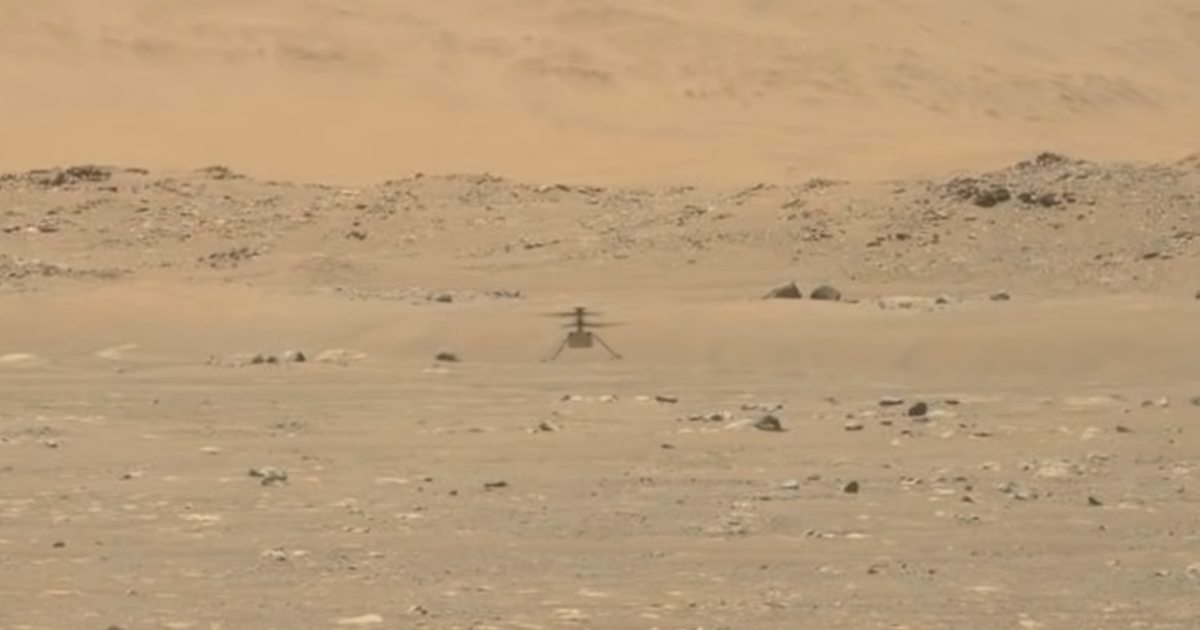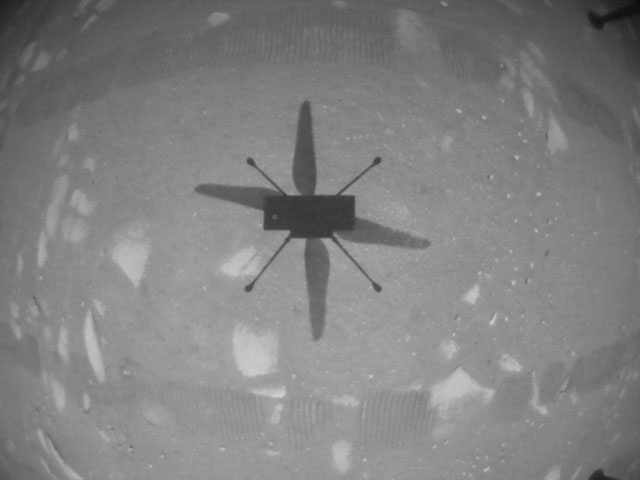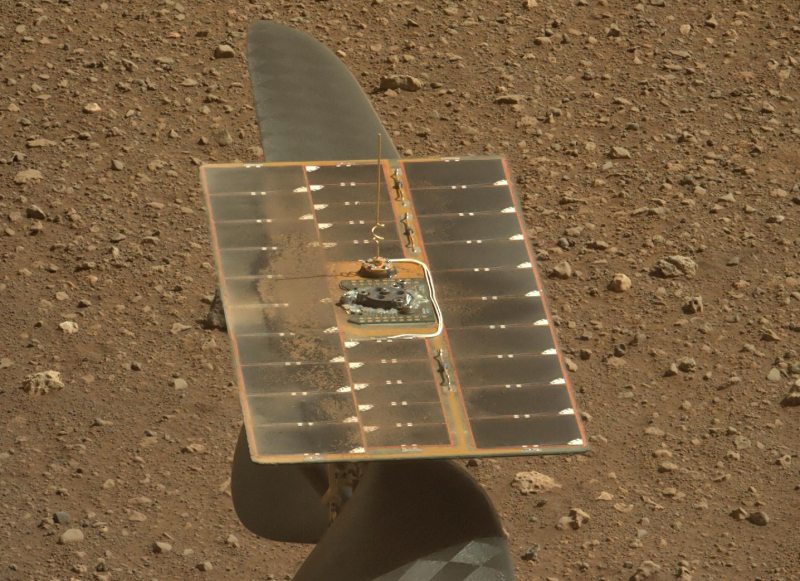
NASA’s Ingenuity Mars Helicopter successfully completed humanity’s first powered, controlled flight on another planet last night.
The following video taken by NASA’s Perseverance rover’s Mastcam-Z cameras show the 1.8 kilogram helicopter hovering at an altitude of three metres above the surface of the Red Planet before safely landing.
By “controlled flight”, it doesn’t mean the Ingenuity team was able to directly control it in real-time – and that’s part of what made this demonstration so perilous. The helicopter is pre-programmed with flight instructions and then the command to fly is issued, with the team here on Earth not knowing the result for a while due to communications lag.
Ingenuity also managed to take a snap during its first flight using its navigation camera, which autonomously tracks the ground. You can see the tracks from Perseverance, left after the rover moved away following (carefully) dropping off Ingenuity early this month.

Ingenuity’s 471-million-kilometre journey aboard Perseverance ended on April 4 with a 10cm drop from the rover’s belly on to the surface.
Ingenuity’s first flight was to originally occur around April 8 (local time), but it was pushed out to April 11 being the earliest date. That was then shifted as engineers worked on pre-flight checks and a solution to a command sequence issue that prevented the helicopter from transitioning to flight mode. On April 16, the helicopter was able to complete a rapid spin test.
Ingenuity is powered by a solar panel measuring roughly 425 mm by 165 mm charging a lithium-ion battery pack consisting of six Sony Li-ion cells that can provide enough energy for one 90-second flight per Martian day. In a photo taken last week, Ingenuity’s solar panel looked rather dusty but NASA didn’t seem fussed, saying it would have little impact.

The next couple of flights involve the helicopter reaching an altitude of up to five metres above the surface and travelling up to 15 metres forward and back to the landing area. Subsequent flights are still being planned.
Even if Ingenuity fails in future tests, it will have already provided a trove of data – a good result for what was a “last minute” addition to Perseverance’s bigger mission, which is to seek signs of ancient life and collect rock/soil samples.
Michael Watkins, director of JPL, which built Ingenuity and manages the project said:
“The Mars Helicopter project has gone from ‘blue sky’ feasibility study to workable engineering concept to achieving the first flight on another world in a little over six years.”
You can read more about Ingenuity here and the Mars exploration program here.
Trivia – The first 12-second flight of the Wright Brothers’ airplane occurred in 1903. So, we’ve gone from that to achieving solar powered flight on another planet in under 118 years. Given our level of tech smarts, surely we can more rapidly address pressing problems here on our own planet such as climate change. But it’s not so much a question of technology – we already have that with renewables backed by storage – it’s more an issue of will.

 RSS - Posts
RSS - Posts



Speak Your Mind